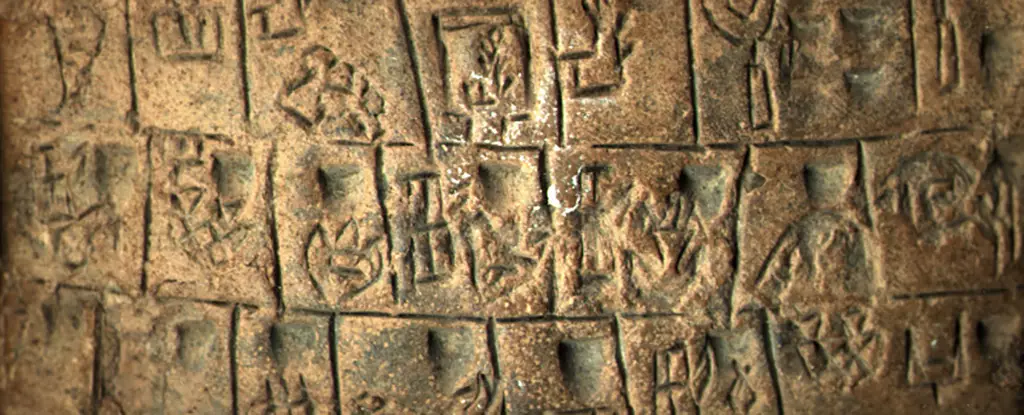The journey of human communication has taken remarkable turns over the millennia, notably culminating in the establishment of writing systems that are foundational to contemporary civilization. The transition from mere symbolism to structured writing is a nuanced evolution, particularly evident in ancient Mesopotamia, where civilization first blossomed. Recent research conducted by a team at the University of Bologna has shed light on the intricate relationship between ancient seals and their role in the inception of one of the earliest writing systems: proto-cuneiform. This exploration not only deepens our understanding of early human cognition but also reflects the cultural sophistication of our ancestors.
At its core, writing represents a systematic method of using symbols to communicate complex ideas, ranging from practical information to abstract concepts. Prior to the establishment of formal writing systems, however, societies relied on rudimentary symbols to communicate essential information. These proto-writing forms, identified as proto-cuneiform, have played a crucial role in the genesis of formalized writing. The researchers, led by philologist Silvia Ferrara, sought to ascertain whether visual components of ancient sealing practices significantly contributed to the nascent developments in writing.
The investigation hinges upon the comparison of imagery found on ancient cylinder seals with the shapes and features of proto-cuneiform signs. This methodological approach enables the researchers to argue that these early artifacts were not merely decorative but possessed functional relationships with proto-writing systems. The findings illustrate that symbols related to everyday items, such as textiles and vessels, were not merely coincidental representations but were intertwined with a developing lexicon.
Cylinder seals, used primarily for stamping designs onto clay tablets, were invaluable artifacts in ancient Mesopotamia. They served dual roles—both as artistic expressions and as means of record-keeping for trade and resource management. Ferrara and the research team meticulously analyzed the visual elements of these seals, focusing on recurring motifs like fringed textiles and netted vessels. By correlating these images with proto-cuneiform signs, they highlighted striking similarities in representation.
For instance, the triangular shapes and vertical lines etched onto seals, representing textiles, resemble the proto-cuneiform notations for those same materials. Such visual connections challenge the perspective that these symbols arose in isolation, instead suggesting a continuum of communicative practices where imagery gradually transformed into a method of codified writing. This signifies a cognitive leap whereby society transitioned from visual representation to symbolic abstraction.
The implications of these findings extend beyond mere historical curiosities; they reflect significant advancements in human cognitive and cultural development. Writing is often heralded as a pivotal milestone that separates prehistory from history, enabling societies to document and reflect on their existence, governance, and ideas. By tracing the evolution from visual interpretations to systematic grammar, we can better comprehend how early humans began to engage with their world in increasingly sophisticated ways.
According to Ferrara, the synthesis of image and writing exemplifies a remarkable innovation in cognitive technology. The transformation of images into a structured language is emblematic of humanity’s ability to abstract and conceptualize—skills that have laid the groundwork for complex societies and cultural evolution.
The research spearheaded by the University of Bologna highlights the essential connection between ancient artistic practices and the development of formal writing systems. By examining cylinder seals in conjunction with proto-cuneiform signs, we gain insights into how basic imagery laid the foundation for a systemic approach to communication. This exploration not only contributes to historical linguistics but also underscores the intricate relationship between art, culture, and the intellectual evolution of humanity. As we reflect on our collective past, we recognize that such early innovations have shaped the very fabric of modern civilization, leaving an indelible mark on our capacity for communication and understanding.


Leave a Reply